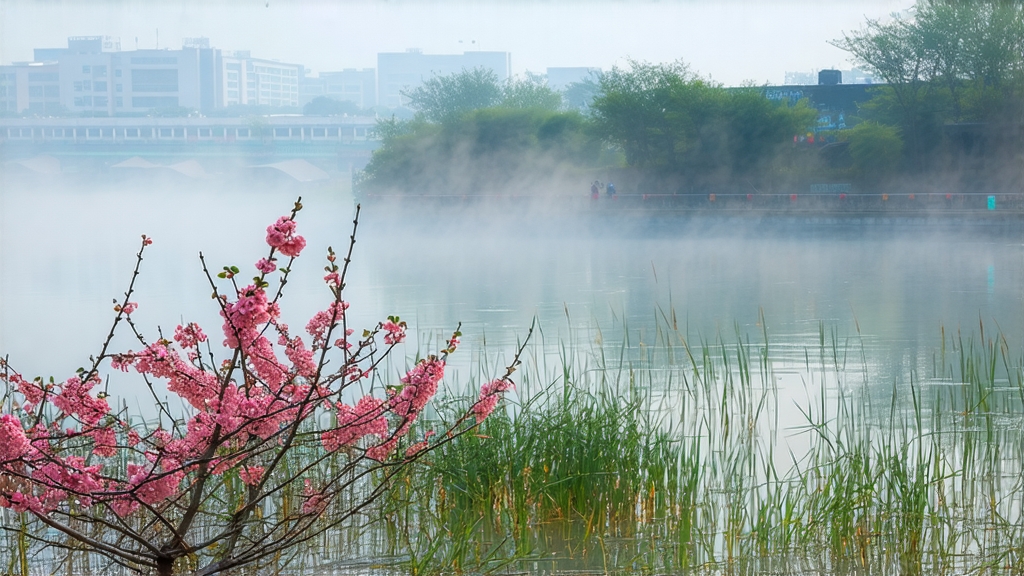
Tucked into the mist-laced hills where Jiangsu Province kisses the eastern shore of Taihu Lake, Biluochun—literally “Green Snail Spring”—has for three centuries been the quiet jewel of Chinese green tea. Foreign drinkers often meet Dragon Well first, yet connoisseurs eventually drift toward this tiny, tightly coiled leaf for its perfume-like cup and the story it carries from the 17th-century Kangxi Emperor, who rechristened the original “Scary Fragrance” after its snail-shell shape and early-spring harvest. Today the name signals both a protected-origin product and a sensory ritual that distills the cool aquatic air of Taihu into a single sip.
Geography and micro-climate write the first lines of that story. The Dongting Dongshan and Xishan peninsulas rise out of the lake like inverted tea trays, their granite soils shallow but mineral-rich, their slopes angled to catch the first light yet shaded by flowering peach, plum and apricot trees. Night vapors rolling off the water settle into dew that lingers until sunrise, letting the buds hydrate slowly while absorbing the fruity exhalations of surrounding orchards. Locals insist this botanical neighborhood is why Biluochun carries a natural floral note impossible to replicate elsewhere—an assertion chemists corroborate by identifying higher concentrations of linalool and geraniol than in any other China green.
The cultivar itself is a group of landraces—predominantly Fuding Da-Bai-Hao genes crossed with indigenous Taihu shrubs—selected for downy buds and a low-temperature growth curve. They flush two weeks earlier than Dragon Well clones, yielding only a ten-day picking window between Qingming and Grain Rain when the standard is one bud plus an unfurling leaf no longer than 2.5 cm. A skilled picker can finish 500 grams of fresh material in an hour, yet that basket shrinks to 100 grams after the night withering and finally to 25 grams of finished tea, explaining why top-grade Biluochun often outweighs silver in value.
Craft begins the moment the baskets descend the hillside. The leaves are spread on bamboo trays set in draft-free rooms where lake-cooled air reduces field moisture by 15–20 %, softening cell walls without oxidizing the greens. Next comes the most cinematic step: hand-firing in a cast-iron wok heated to 180 °C. The master—usually a woman whose palm has calloused to the heat—tosses 150 grams of leaf with a wrist motion that looks like calligraphy in mid-air. In 3–4 minutes the temperature drops in three deliberate stages while her fingers roll each bud against the scorching metal, locking in the jade color and forming the signature spiral. When the leaf feels “silkworm-cocoon tight” and the aroma shifts from grassy to orchid-peach, she lifts it onto a rush mat to cool, then repeats the cycle twice more at lower heat. The entire kill-green and shaping takes twenty minutes, after which the tea is dried at 60 °C for an hour, rested overnight, and given a final gentle bake at 50 °C to stabilize moisture below 6 %. No machine can yet mimic the micro-adjustments of pressure and timing that decide whether the cup will taste like steamed edamame or honeyed apricot.
Grading follows a local code: Supreme (Tou-Cai) comprises only pearl-white buds; Grade 1 (Te-Ji) allows one leaf; Grade 2 (Yi-Ji) permits a slightly longer leaf; lower grades lose the spiral and gain broken bits. A tell-tale sign of authenticity is the tracery of white down on the dark-green coil—absence usually means counterfeit or late harvest. When brewed, the leaf should sink immediately, a clue to its high density and proper firing.
Water choice matters as much as leaf. Taihu residents draw from the same granite springs that feed the lake, but anywhere else a neutral, low-TDS spring water at 75 °C is ideal. Use a tall glass or a gaiwan of 150 ml; 3 grams of tea suffices. After pre-warming the vessel, drop the leaves onto the bottom and pour the water along the wall to avoid scorching. The first infusion, 30 seconds, releases a pale champagne liquor with a rising aroma that moves from fresh garden pea to white peach and then to a faint marine note reminiscent of nori. The second infusion at 20 seconds deepens the color to jonquil and adds a